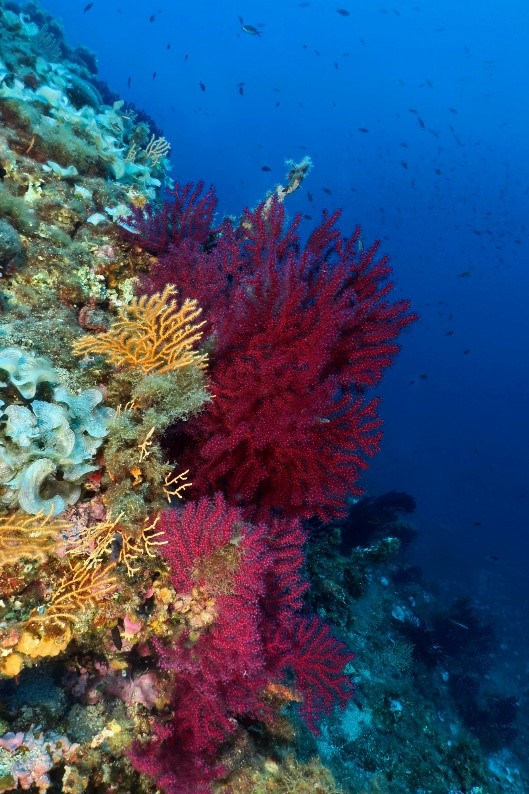 |
submitted by /u/RogueOrange [link] [comments] |
by Adam Hanlon
Daniel Keller shares more of his extensive knowledge about capturing color underwater. In this episode of Wetpixel Live with Adam Hanlon, he discusses how filters can be used to balance out the spectrum of light captured by still and video shooters.
Wetpixel Live is a series of video conversation that aims to answer many of the commonly posted queries on the Wetpixel Forum. There are now nearly 80 episodes, covering everything from competition results to dealing with housing floods. If you are an underwater image maker, they are an unmissable resource, so please subscribe to ensure you are notified about new videos as they are posted.
by Adam Hanlon
Pavel Kolpakov of UW Technics offers an explanation of how High-Speed Sync (HSS) works and details the TTL housing boards that have been developed by UW Technics. He mentions that HSS may be useful for shooting near the surface, under bright sunlight, creative photography with different depth of field, and fast-moving objects. It may also be helpful with cameras that offer relatively slow sync speeds.
UW Technics TTL Converters with HSS can be user installed. More details are available on the UW Technics website.
From UW Technics
New TTL Converters with HSS Suport
Pavel Kolpakov, developer of electronic systems for underwater photo gear and founder of UW Technics group of companies, shared some information about a new family of TTL Converters for High-Speed Synchronization support, developed and released by UW Technics in 2020.
Classic underwater strobe produces a mono flash. To exposure the shot correctly, the flash must fire at the moment when the camera shutter window is fully open. Photographers use the term “normal flash” for this case. The fastest available shutter speed is named sync speed, and it depends on the actual speed of the mechanical shutter’s parts. Most modern photo cameras have a sync speed of about 1/160…1/250 s.
Communicating with the camera, a regular TTL Converter limits shutter speed to 1/160 – 1/250 automatically to provide normal illumination by underwater strobes to avoid a dark band at the edge of the image. Photo camera requests to limit the sync speed this way via Hot Shoe TTL protocol.
This limitation was quite essential for underwater photographers and was mostly normal until recently. But this year there have been positive changes in this topic. Retra company released HSS underwater strobes with optical synchronization, UW Technics company released a full line of HSS TTL Converters and other necessary products for ultra-fast shutter speeds usage. So, shutter speeds up to 1/8000 s became available for underwater photographers.
High-Speed Synchronization (HSS) is the flash operation at ultra-fast shutter speeds (available range 1/250 – 1/8000 s). The camera shutter window never opens full at high shutter speeds but looks like a narrow moving part opened between two curtains. In this case, the flash lighting must occur with a long series of short flashes at a frequency of about 30 kHz while a partially open shutter window moves along the frame. The total flash duration is much longer than normal mono flash. The intensity of HSS flash lighting can be adjusted by changing the frequency of these pulses. The system can be switched to HSS mode via the camera menu.
This year, the HSS lighting support UW Technics company has developed and released a whole series of HSS TTL Converters for work with Sony, Nikon, Canon, and Olympus cameras at ultra-fast shutter speeds. Moreover, UW Technics HSS TTL Converter different models are already available for almost all underwater housings on the market: Nauticam, Hugyfot, Sea&Sea, Nexus, Isotta, Sealux, Aquatica, Seacam, Subal, Ikelite, Seafrogs, and Nimar.
Underwater photographers have flexible HSS tools for working with exposure (for shooting near the surface, under bright sunlight, creative photography with different depth of field, fast-moving objects, and many other applications).
As an example, very popular among the underwater photographers now are TTL Converters for Nauticam housings. By the way, those TTL boards also fit Hugyfot housings. These are the following products:
- #11074-HSS (for Olympus)
- #11031-HSS (for Nikon)
- #11052-HSS (for Canon)
- #11075-HSS (for Sony A7-A9 family)
- #11073-HSS (for Sony A6000-A6500 family)
Also popular is the newest product family developed for Seafrogs (Meikon) housings. In addition to TTL and HSS, these products also include a leak detector with a goldplated sensor, siren, and LED alarm. This is an advanced combined TTL board. Optional production also includes different Optical and Electric Bulkheads, purposed for work with TTL Converter. Currently, UW Technics produces the following HSS TTL boards for Seafrogs housings:
- #16034-HSS (for Sony A7 family)
- #16033-HSS (for Sony A6xxx family)
- #16037-HSS (for Canon)
- #16038-HSS (for Nikon)
User installation is very easy, it takes 1 minute:
TTL boards for Nexus housings support original Nexus Optical and Electric Bulkheads. These are the following products of this family:
- #11063-HSS (for Nikon)
- #11064-HSS (for Canon)
It should be noted that this year there has been a lot of interest in the HSS feature throughout the underwater photography community. Reviews of the experience of the practical application of HSS in underwater photography began to appear in the press.
Many photographers rate HSS as a useful creative tool for underwater photography. UW Technics company is currently engaged in several developments of underwater electronics based on High-Speed Synchronization. As noted above, in 2020, the company released 38 new products for HSS support.
UW Technics can be contacted via email or via Facebook. Full specifications and details of the products are available on the UW Technics website.
This year has been challenging on so many levels, with the coronavirus crisis disrupting everyone’s lives. For numerous divers, not being able to get underwater has been tough. As a result, you would be forgiven for wanting to get back in the water as soon as possible. We feel the same and can’t wait for our next diving trip. To help you get ready, here are our tips for safely returning to diving after a long break.
First things first — if you have been diagnosed with and recovered from Covid-19, you must see a specialist before diving again. While scientists are learning more about the virus on a daily basis, we know that, in many people, coronavirus attacks the lungs and other vital organs. This means that only an appropriately qualified physician can sign you off to dive.
For everyone else, however, it is more about coming up with a plan for returning to diving after a long break. What’s the best way to safely get back underwater?
Physical fitness

Physical fitness is one of the key factors for safe diving. Some of you may have spent the better part of 2020 devising new fitness regimes and improving your diet, but many of us have enjoyed quality time with our couch and Netflix instead. If you’re part of the latter group, building up strength and stamina in good time before a dive trip is wise.
Diving itself may seem effortless, especially when you’re gliding along a tropical reef in a mild current, with a boat waiting to pick you up when you surface. Consider the other parts of a diving day, though, as this is often when fitness comes in handy.
Even if you are valet diving, with someone else transporting and preparing your gear, being in good physical condition is helpful. Balancing your weight, including equipment, just before a giant stride off the boat is one thing. Climbing a ladder after a dive is another. And on the dive, being able to efficiently kick through a current for a short time will help you return to the exit point.
When shore diving, entries and exits are often the most demanding parts of the dive. Having the strength to walk your equipment in and out of the water makes the entire dive more efficient and therefore safer.
To achieve this, you don’t have to start a full-on fitness regime. You’re unlikely to stick to that if you have been a couch potato for months. Instead, consider adding short walks to your daily routine or incorporating brief exercise routines and strength training. You can start very simply in your own home with a handful of squats or push-ups.
Build up slowly
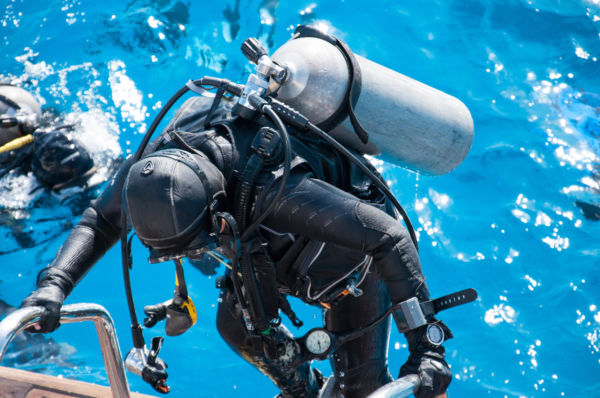
Just like you built your diving experience slowly, coming back after a long break will take time. It might be tempting to look at the last dive in your logbook and try to repeat it straight away. However — especially if that was a pinnacle dive — pushing the boundaries of your existing diving experience, it’s not a great first dive back.
Getting back into diving is not about rushing. In fact, the opposite is true. Just as you might test a bunch of new equipment for the first time in the pool, consider doing the same. Granted, it’s not an exciting dive site, but it’s the best place to check if everything still fits and works as you expect it to. It’s also a good place for a weight check. Remember, you will need to adjust weights if you are changing suits or heading into saltwater after the pool.
With that squared away, consider your underwater comfort zone and start with a dive that is well within it. A couple of diving days in familiar conditions, if possible, will allow you to build confidence and regain muscle memory. Take it slowly and enjoy the process.
Technical diving
Starting slowly is even more important when you’re building up to deeper or longer technical dives after a break. You may be qualified to dive hypoxic trimix to 325 feet (100 meters) but going from a year on land to five or six cylinders at depth is simply a recipe for disaster. Maybe you were accustomed to hours-long, shallow cave dives. After months out of the water, however, your stamina is likely diminished. If your rebreather has gathered dust for months, it’s probably time to service the unit before even attempting to head to the pool. With the unit ship-shape, consider a refresher for yourself.
Note that refreshing your skills doesn’t necessarily mean booking a course as such. A similarly or higher qualified dive buddy may be able to help. Filming yourself practicing skills also goes a long way toward finding weak points and improving them.
Just as you completed your training in several stages, your return to diving after this year or possibly longer will take some time. The good news is, however, that all this underwater time is enjoyable. Put simply, diving cautiously is part of your return to diving to the top level of your qualification.
Refresher dives for newbies
Technical divers may be on one end of the spectrum. On the other hand, there are those who may have just completed their qualification before taking this long break. If you are one of those newly qualified divers and had to spend several months out of the water, we recommend a refresher course with an instructor or divemaster. Open water certification courses pack a lot of information into a short space of time. Not everyone can consolidate and solidify this information with a couple dozen dives straight away – and these dives are crucial to truly commit diving skills to memory.
It may feel like you’re repeating part of your initial certification course, but practice truly leads to mastery. After all, it makes more sense to practice not only until you can get something right, but rather until you can’t get it wrong anymore.
Whichever way you choose to get back to diving after a long break — coronavirus-related or not —to take things step by step. Rushing into big dives is never a good idea.
Share this:
Yvonne Press / About Author
Yvonne Press has worked as a dive professional since 2010, and is now a technical instructor trainer and CCR instructor based in Indonesia. Initially guiding and teaching full time in Scotland, after four years she moved to warmer waters including the Red Sea, Thailand and Indonesia, where she has been based since 2014. The discovery of untouched WWII wrecks lying in 40 to 60 meters off Scotland’s east coast started Yvonne’s journey into technical diving, and she became a TDI and PADI TecRec instructor in 2015. In 2016, Yvonne became southeast Asia’s first female TDI instructor trainer. She now teaches from a variety of locations in Indonesia and recently established her own center in Bali, Dark Horizon Diving. Visit here: http://darkhorizondiving.com.
From Hyères to Menton, the French Riviera boasts the largest concentration of dive sites in France. Every summer, from June to September, divers can enjoy the best conditions in terms of water temperatures (from 18 to 26°C) and visibility (20 to 25 m). Good to know, the water is still warm enough to dive in a wetsuit until November. While a few spots are perfect to learn scuba diving, the depths of its mysterious shipwrecks and breath-taking walls are ideal for advanced divers who have the deep specialty or tech diving training.
Port-Cros National Park
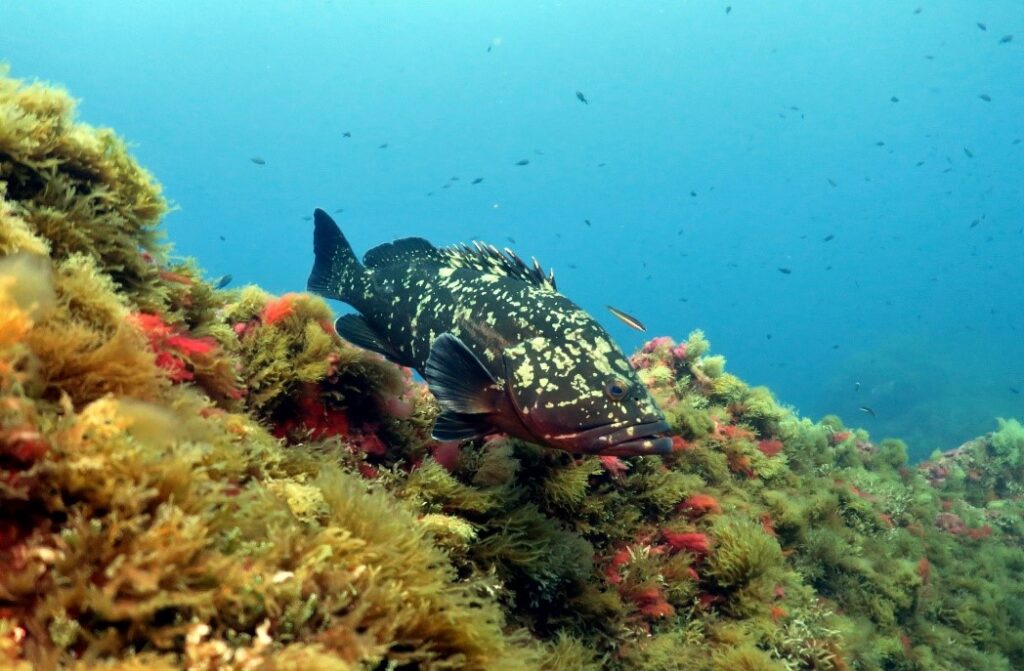
Located between Toulon and St-Tropez, Port-Cros National Park was the first marine park to be created in Europe in the 1960s. So it’s no wonder that after being protected for so long it’s become one of the favourite dive sites for French divers. Within the core area of the national park, where fishing is strictly prohibited, the most famous dive site is “La Gabinière”; a deep drift dive where numerous large groupers are not afraid to come to check you out.
Wreck diving in Cavalaire
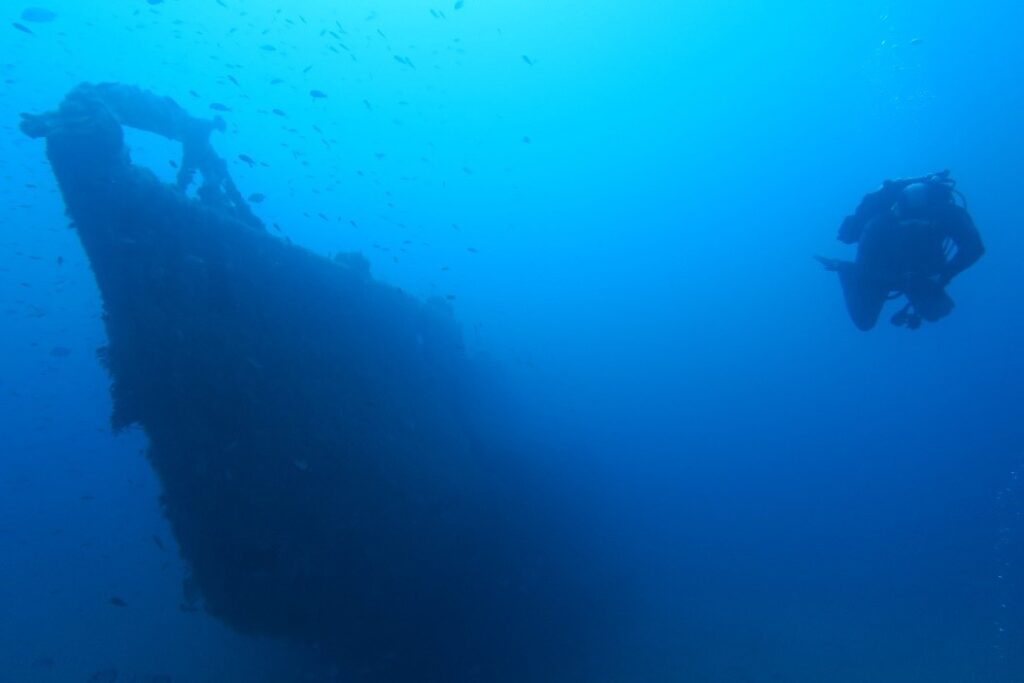
Only 17 km west of St-Tropez, Cavalaire has quickly become the place to go for wreck diving and tech diving training including advanced nitrox and trimix thanks to the number of exciting shipwrecks to explore including the “Torpilleur 178”, between 45 and 48 m deep, or the “Togo”, between 47 and 58m deep. No worries, recreational divers can have fun too in Cavalaire as long as they are Advanced Open Water divers with a Deep Diver specialty. How does exploring the wreck of a WWII submarine, sound? The maximum depth of the “Rubis” is “only” 40 m.
Underwater macro photography in St-Raphael

The Esterel mountain range is famous for its scenic red rocks dropping directly into the blue of the Mediterranean Sea. In St-Raphael, several dive sites are a delight for marine biology or underwater photography enthusiasts. One of them is called the “Lion de Mer”, a rocky islet which both shallow waters for beginner divers and deep walls for the most experienced of us. Colourful nudibranchs, curious hermit-crabs, shy seahorses, and so much more are waiting for patient scuba divers with an eagle-eye.
An underwater village in Golfe-Juan
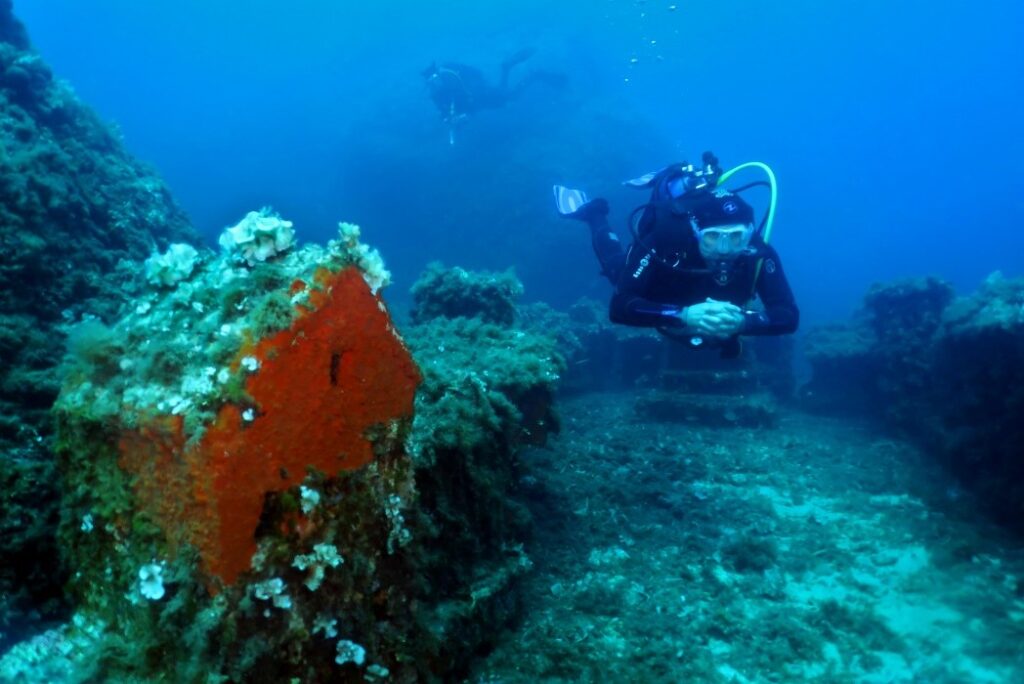
If quirky dive sites are your thing, you are going to love diving at the “Fourmigue” lighthouse in Golfe-Juan, between Cannes and Antibes. With a maximum depth of 15m, all level of divers can explore the miniature underwater village. It was built in the 1990s to serve as the set of an animation movie. Despite the filming project not working out, today the “village” is still there and counts several houses, a cathedral, an amphitheatre and even a pyramid!
Wall diving in Nice
Nice, must be the most accessible place to go scuba diving in the whole of France, not just the French Riviera! You can hop on a tram at the train station or the airport and go directly to the harbour, right in the heart of the city. From there, several dive centres can take you on their boats to breath-taking deep walls in 10 to 20 minutes, including the superb “Pointe Caussinière”. From the 30-35 m, red and yellow gorgonians form elegant bouquets where moray eels play hide and seek.
We hope you enjoyed this blog post about places to dive in the French Riviera, if this has inspired you to dive here, then find your local dive shop now! Or check out our blog post on more top diving regions in France!
Author Bio
Florine is a PADI Divemaster and a Dive Travel blogger at World Adventure Divers. She dives in tropical to extreme cold waters, selecting her destinations when both adventure diving and cultural discoveries are part of the journey, and showing you how to do it without breaking the bank.
Among the diving destinations in Europe, France might not immediately come to mind. However, with 5,000 km of coastline, and the choice of the Atlantic Ocean and the Mediterranean Sea, not to mention the first marine national park in Europe, scuba divers exploring France have a wide choice of fantastic underwater adventures from deep historical shipwrecks to ice diving in altitude. So here is a selection of the some of the best places to dive in France, the home country of Jacques-Yves Cousteau.
Marseille & Calanques National Park
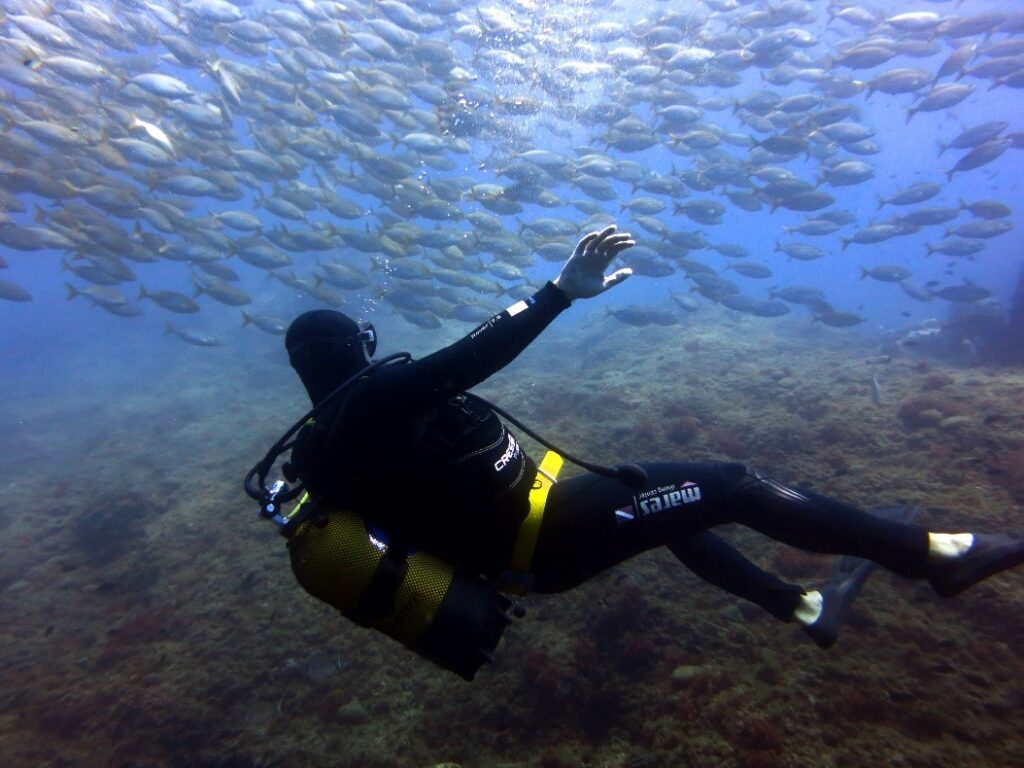
The Calanques National Park was only created in 2012. Still, it reinforced Marseille’s reputation for superb diving, especially around the Riou Islands with walls covered in gorgonians and cavern covered in Mediterranean red coral. Marseille’s vast underwater playground also includes two historical shipwrecks within recreational diving depths. Most dive centres are located at the “Pointe Rouge” Harbour, 10 km south of the city centre. It usually takes 20 to 30 minutes to reach the dive sites.
French Riviera

Stretching from Hyères to Menton, the French Riviera offers a wide range of diving experiences in France. Whether you are into exploring marine protected areas and their marine life wonders, or into deep shipwrecks, there is something for every level of divers:
- Located between Toulon and St-Tropez, Port-Cros National Park was the first marine park to be created in Europe in the 1960s. It is now famous for encounters with large friendly groupers.
- The area between Porquerolles Island and St-Tropez is also famous for superb wreck diving.
- The Esterel area from St-Raphaël is perfect for beginner divers while Golfe-Juan, between Cannes and Antibes, offers quirky dive sites.
- From Nice, advanced divers will love exploring the drop-off of Cap-Ferrat.
To learn more about diving in the French Riviera, read our dedicated blog post.
Corsica
Easily accessible by plane or by ferry from Marseille, Toulon and Nice, the island of Corsica is another delightful destination for scuba divers in France. There are dive sites all around the island, but the south tends to attract more scuba divers, especially the Scandola Marine Reserve which is also a UNESCO marine world heritage site. Good to know, there is now a new marine park at the northern tip of the island, the Cap Corse-Agriate natural marine park.
Brittany
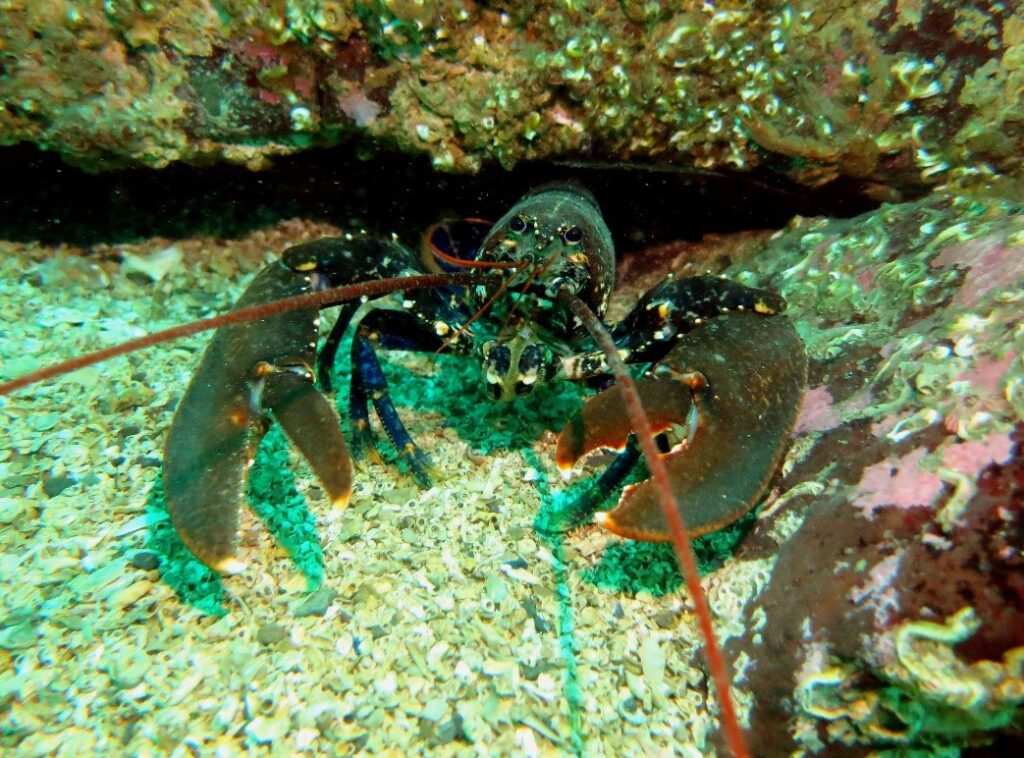
Scuba diving in France is not only about going south but also west! For those who don’t fear the cold water or passed their drysuit specialty, the waters of the Atlantic Ocean have many unexpected treasures. The collection of historical shipwrecks is also impressive, including a WWII German submarine off the shore of Lorient. You can find yourself playing with seals underwater on the northern coast of Britanny, off Morlaix or St-Malo. From the Crozon Peninsula in Finistère, you can also now explore the new Iroise marine nature park.
Ice diving in the French Alps
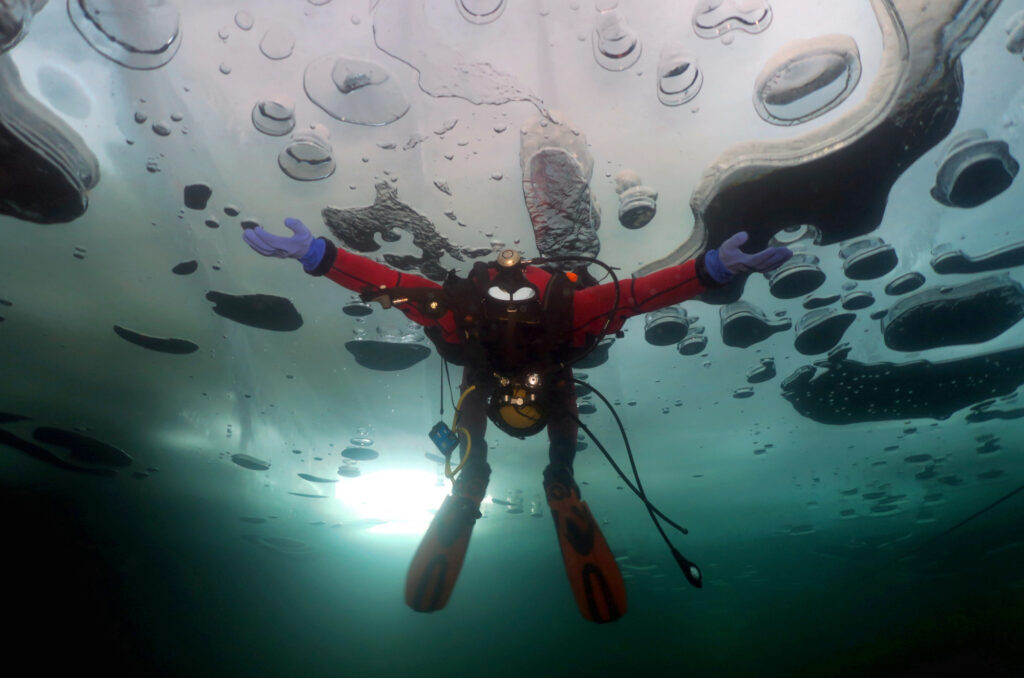
Last but not least, the highest summits in France offer the opportunity to try an out-of-this-world experience by scuba diving below the ice of an altitude lake. Available in the winter, usually from January to March, and equipped with a dry suit and a full-face mask, diving in the 2°C water is surprisingly comfortable. The atmosphere below the ice and the blue glow of the light going through it is something you’ll never forget. Best places to go ice diving are Tignes and Val Thorens. The first one is the most accessible and the latter includes hiking with snowshoes for 45 minutes.
We hope you enjoyed this blog post about places to dive in France, if this has inspired you to dive here, then find your local dive shop now!
Author Bio
Florine is a PADI Divemaster and a Dive Travel blogger at World Adventure Divers. She dives in tropical to extreme cold waters, selecting her destinations when both adventure diving and cultural discoveries are part of the journey, and showing you how to do it without breaking the bank.
Sydney is one of the few locations in the world where a cosmopolitan city is within easy reach of incredible scuba diving – and it doesn’t even require a boat to get there! If you are in Sydney and want to dive, there are plenty of dive sites to explore that are literally just a step off the shore.
Here are just a few of our favourite shore diving sites near Sydney…
Cabbage Tree Bay (Fairy Bower and Shelly Beach)
Sydney’s Cabbage Tree Bay Aquatic Reserve is home to some incredible sites which make for excellent diving both during the day and at night. Depending on the time of year, common sightings here include cuttlefish, Port Jackson sharks, wobbegongs, stingrays, and large schools of fish. Look out for the friendly blue groupers that like to follow divers!
You can dive in this area time after time and still be surprised by what you see. Exceptional highlights are bronze whalers and sometimes the odd eagle ray, dolphin or turtle streams through.
Being a no-take zone, Cabbage Tree Bay has the greatest diversity of marine species of any bay around Sydney.
Learn more about diving at Shelly Beach here.

Fairlight
Fairlight is a shallow shore dive characterised by a selection of ledges and boulders. Beyond the grass and kelp there are large boulders and ledges running parallel to the land. Look out for scad, morwong, cuttlefish and the occasional Moorish idol. Take a look under the boulders and in the crevices to see what’s hiding out – you can always be surprised here!
Kurnell Monument
Kurnell Monument usually has some current and it’s often dived as a drift dive along the shore. This is a relatively shallow dive site which is wonderful for all levels. Underwater photographers will be in their element here as they catch glimpses of pipefish and even weedy sea dragons. The shallow depths mean plenty of natural light making it easier to capture the popping colours of the marine life.
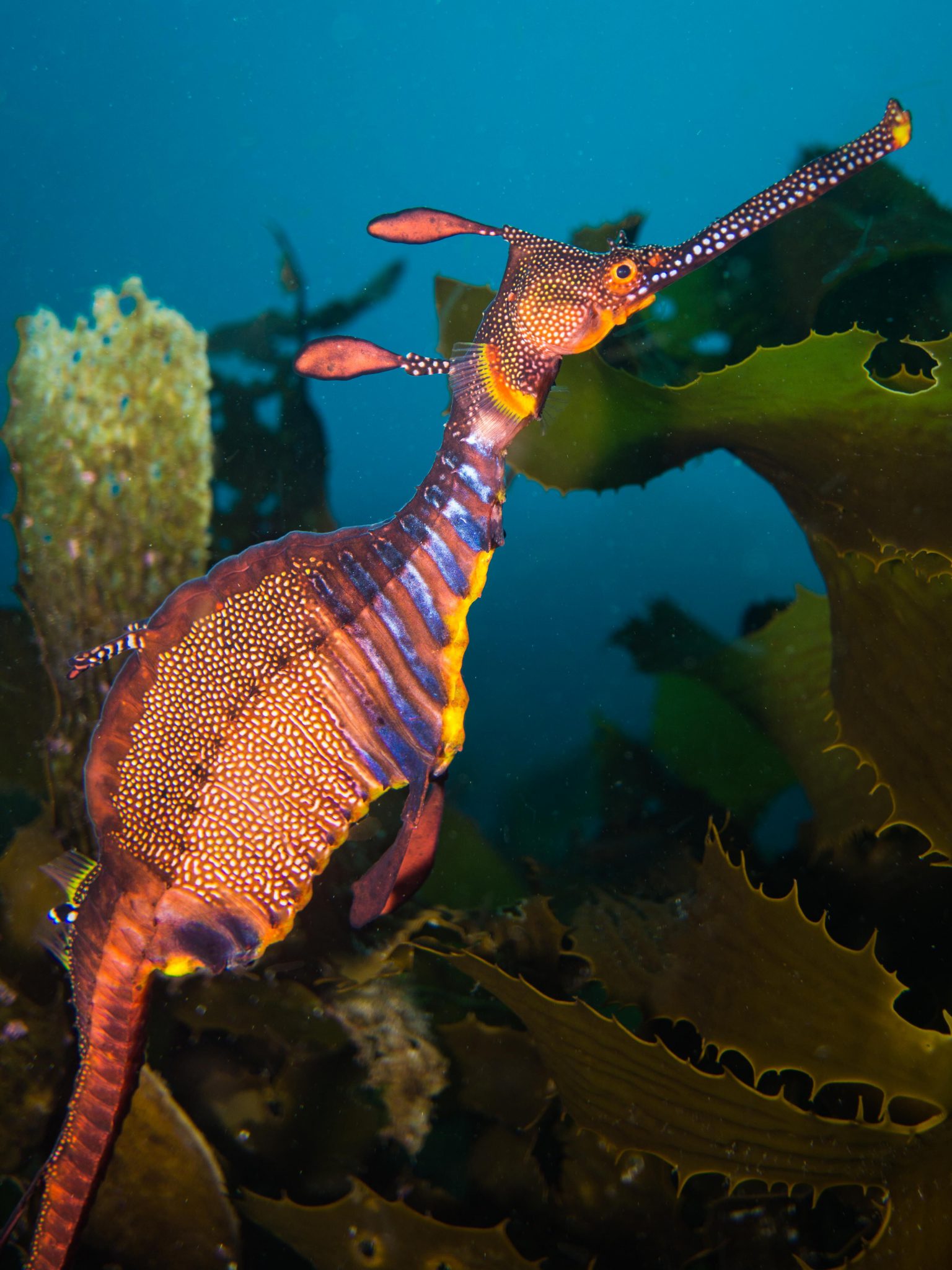
Gordon’s Bay, near Clovelly
This site is a lot of fun as you follow the 600 meter/1,968 feet long underwater nature trail which is marked out by permanent concrete-filled drums. The bottom composition of this site is mainly rocks on a sandy bottom but it attracts an abundance of marine species which choose to reside here. Look out for octopus and crustaceans as well as Mado and morwong.
Freshwater
Freshwater has a mixed terrain of sponges, boulders, overhangs and crevices – which make great hiding spots for all manner of macro critters including octopus and weedy sea dragons. If you prefer larger marine species, look out for wobbegong sharks, blue groupers, schools of Kingfish and the sites resident turtle.
Freshwater can be subject to currents and tides so should be dived with a guide who is familiar with the site.
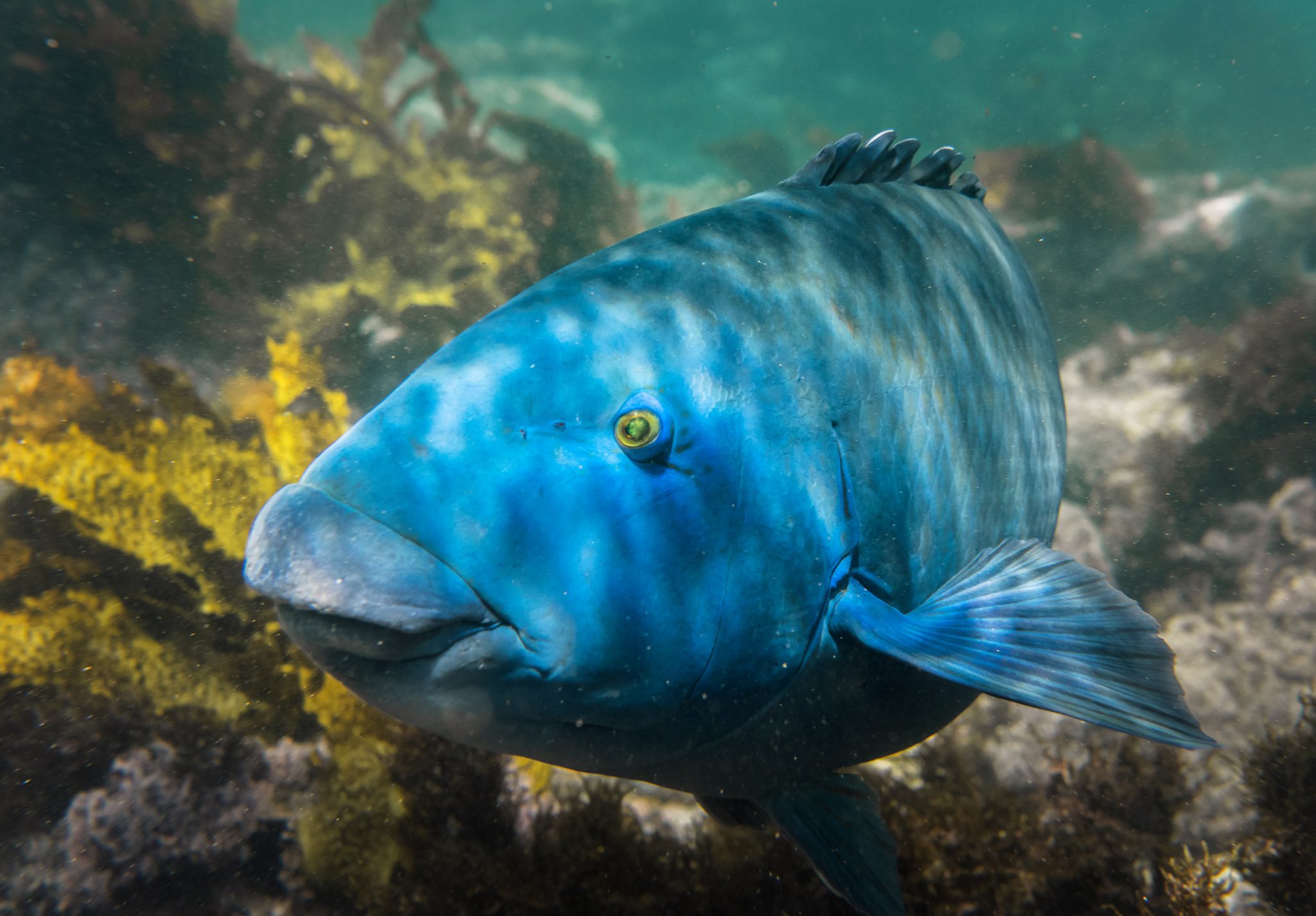
Chowder Bay at Clifton Gardens
You may have heard of the Lembeh Strait in Indonesia which is famous for its muck diving and weird and unusual marine life – Chowder Bay is Australia’s equivalent! In the soft silt of Chowder Bay in Clifton Gardens, you’ll find countless critters hiding in plain sight. Underwater photographers should come prepared to shoot some of the best macro life in Australia. Highlights here include several species of frogfish, seahorses, pipefish, octopus, squid, blennies, a plethora of nudibranchs and countless species of macro crustaceans.
Kurnell Steps
Kurnell Steps offers similar marine life sightings to Kurnell Monument, including pygmy pipefish and weedy sea dragons. Kurnell Steps can be trickier to dive than Monument due to its location being more exposed to tidal flow in and out of the harbour. This site is best dived at slack tide.
Bare Island at La Perouse
There are actually two dive sites here, one on each side. It’s possible to dive the right side in most conditions but the left side is usually dived only when conditions are flat and calm. Both sites are surprisingly colourful due to the soft corals and sponges which thrive here. Look out for multiple species of sea stars and nudibranch as well as seahorses, pipefish and Red Indian fish.
Learn more about diving Bare Island here.

Are you ready to dive into (or step into) Sydney’s best shore diving sites? Locate a PADI dive shop and start exploring your own backyard.
by Adam Hanlon
Continuing to offer advice based on their experience in the field, Adam and Alex provide some ideas on how to deal with flooded strobes. In addition, they chat about troubleshooting sync cord connection issues and some ideas on avoiding floods.
Wetpixel Live is a YouTube channel devoted to short films helping explain the hard-edged information people need to improve their underwater images. To see more of the channel and to be informed about new releases, please head on over to the channel and subscribe.
Interesting Info
 Private Scuba Tuition – Learn Scuba Skills.
Private Scuba Tuition – Learn Scuba Skills.
Joey Ridge offers private scuba diving training for those who would feel more comfortable in a private one to one setting
Diving Services
- Beginner Diving
- Padi Recreational Courses
- Padi Technical Courses
- Professional Instructor Courses
- Dive Equipment Servicing
Contact Me
Contact: Joey Ridge
PADI Course Director
TecRec Instructor Trainer
Tel: +357 99676216
Whatsapp – Facetime – Skype



